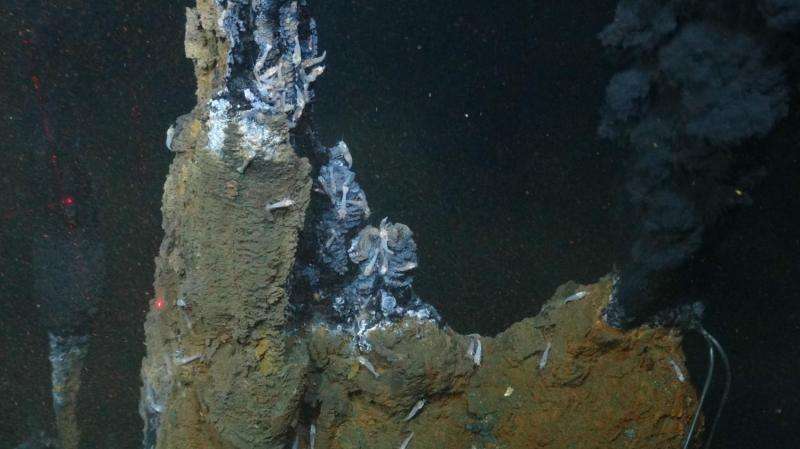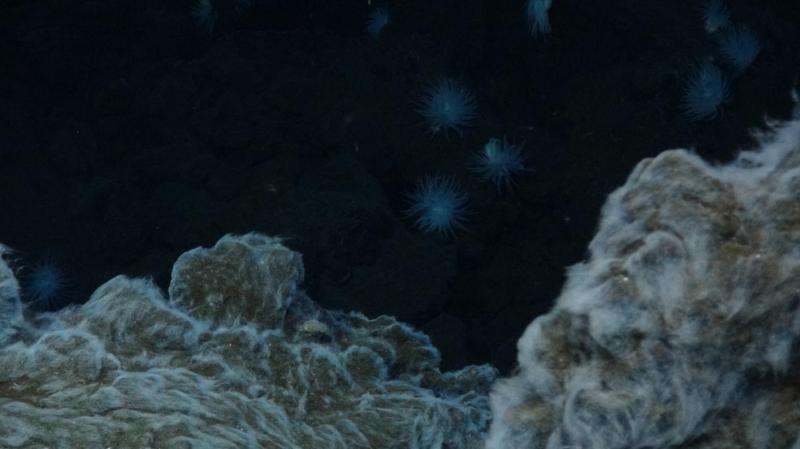Scientists solve deep ocean carbon riddle

New research involving scientists from University of Southampton and the National Oceanography Centre Southampton (NOCS) has identified a crucial process behind the reason why dissolved organic carbon (DOC) levels in the deep oceans are constant despite a continuous supply from the surface ocean.
The pool of dissolved organic carbon (DOC) in the oceans is as large as all of the carbon in the atmosphere. Phytoplankton, which remove CO2 from the atmosphere and convert into more complex carbon compounds, are the primary source of DOC in the ocean.
Deep ocean DOC concentrations are almost constant throughout the world's oceans and are thought to be resistant to biological breakdown. However, with the continuous DOC supply from the surface oceans, concentrations in the deep sea are not increasing.
Research published in the journal Nature Geoscience highlights the importance of deep ocean water circulation through hot hydrothermal systems as one of the main removal processes in this environment balancing the supply. The vent systems convert the biological resistant long-lived carbon into more readily available carbon, which organisms can then use.
The research was led by marine chemist Dr Jeff Hawkes, from the National Oceanography Centre Southampton (NOCS), who took part in two UK research cruises to hydrothermal vent sites around the world, including Von Damm and Beebe vent sites in the Caribbean and the E2 and E9 vent sites in Antarctica, on the RRS James Cook conducting seafloor sampling using the deep ocean remotely-operated vehicle (ROV) Isis.
Jeff said: "There has been a long outstanding question about whether hydrothermal vents are a source or sink of organic carbon to the oceans. We have shown that hydrothermal vent fluids contain almost none of the organic carbon which accumulates in the oceans, which means that vents are a sink for this unreactive 'stored' carbon."

Eight academic institutions world-wide contributed to this research, funded by the Natural Environment Research Council (NERC), with data from other vent sites. The field work was complemented with high-temperature high-pressure experiments in the laboratory to replicate the hydrothermal observations and to suggest mechanisms for the processes.
Co-author Professor Eric Achterberg, from the University of Southampton who supervised Jeff's PhD, said: "The beauty of this approach is that with both field and laboratory experiments we were able to prove how the mechanisms operate for the removal of organic carbon in the deep ocean."
Co-author Dr Doug Connelly from NOCS, who also supervised Jeff's PhD, added: "This work finally gives us a mechanism for the deep ocean carbon cycle, addressing the long standing problem of why the DOC in the world's oceans is not increasing."
More information: Efficient removal of recalcitrant deep-ocean dissolved organic matter during hydrothermal circulation, Nature Geoscience, DOI: 10.1038/ngeo2543
Journal information: Nature Geoscience
Provided by University of Southampton





















